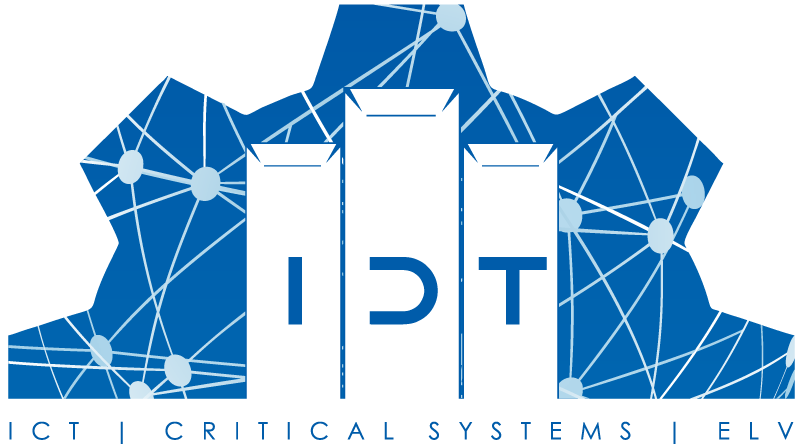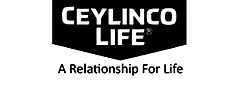Data Center
Design
and Consulting.
Data Centers are essential to high capital-intensive businesses, and of which investment extends beyond the initial capital cost.
Data Centers are required to be resilient, secure, and reliable. To ensure that these are achieved with top priority, the systems are to be secured with considerations made towards the overall challenges. These include ease of access, natural environmental factors, infrastructure constraints, and many more to sustain the required Data Center standards.
IDawn Technologies can provide companies and organizations with End-to-End Solutions to meet all these Data Center “pain points” throughout the entire process whilst being consistent with Global Standards and best practices.
Founded in 2005, IDT provides a whole range of services including ICT, ELV, and Critical Systems Consulting and Design Services to companies in Sri Lanka and all over the world.
IDawn Technologies offers Project Consultancy, Project Management, Planning, Liaison, Coordination, Designing, Progress Monitoring, Quality Control, UAT, and Operations Consultancy for all Data Center design & consultancy (and other systems) with great emphasis on every detail to assure that the client receives the systems in the best-optimized state.
Involved in large-scale high-rise building projects, IDT is consulted and is called in for auditing systems and procedures because of the quality, integrity, deep understanding of technology, detailed reviews, unwavering support which keeps the client updated with continuous follow-up, and continued service provided to the client.
With our assistance, your vision is achieved with excellence and that is our ultimate goal.
← click on the DCD pyramid to get more information
Site Assesment and Selection
Site Assessment is the very first act on a road map to model the ideal Data Center. During the process, which the vulnerabilities, characteristics, and exposure of the site will be assessed to identify how they directly or indirectly affect the efficiency and reliability of the Data Centers.
IDawn Technologies will appraise the value of a proposed Data Center site throughout the entire process with the use of a framework for assessment that is based on global data centre standards and best practices. The framework will assist in providing reliable solutions, prioritizing budget, and client's requirements while keeping all approaches consistent with Global Data Center Standards and Best Practices.
Site Assessment and Selection is the foundation component for an investment in a Data Center that covers location accessibility, access to infrastructure facilities such as utilities, natural environmental conditions such as climate, weather, water bodies, and risk exposure to name a few. In the case of an existing building that includes the above; assessing the floor capacity, space required for operation, building structure, modifiability, energy upgradability are critical for data centre site selection and future operations. The Site Assessment and Selection Services provided by IDawn Technologies includes rigorous on-site physical inspections and assessment of the varying factors with the aid of the latest tools and techniques to ensure a thorough assessment of the intended site.
Choosing the Right Co-location
Handling information based on technology and competitive value can be challenging to every business. With co-location services, this facilitates companies to rent space (managed by colocation data centre providers) to locate their servers off-site. This would significantly cut down the massive initial investment expenditure of the facility provided, such as power, building, bandwidth, and physical security other than the hardware. Although the requirements of the clients and the facilities of the companies vary from one to another, there are a few general matters to be taken into consideration before choosing the best fit colocation to fit their business.
- The location of the building in which the servers are to be placed would support the business purpose, operations, and maintenance cost if the required power and cooling systems are provided.
- Connectivity provided via Colocation Services should be reliable and uninterrupted, with higher bandwidth, to run the day to day business operation smoothly.
- Data Center Security is vital since the utmost purpose of it is to manage and store information. Physical security, such as round the clock monitoring, and digital security, such as surveillance cameras, biometrics, are few among the high-security measures to be considered to secure the information of the company. Ensuring that the infrastructure provides the facility to carry out real-time backup to the disaster recovery site with redundant access modes are critical to the operation and business aspects of the datacenter as it could boost the confidence of the service providers, clients, and their customers.
- Data Centre Management is a complex task and requires excellent knowledge and experience in decision making to ensure that the solution complies with the budget whether the choice of colocation partner helps achieve the required outcome.
- Colocation Services should also allow for additional and customized services to support the business initiatives.
Planning and Design
With the modernization and expansion of various businesses, the demand for Data Centers has grown rapidly to meet the data management and storage needs of organizations. With the need for innovative technology growing towards the high-end digital arena, requirements for better connectivity, risk mitigation, and business efficacy is key. This is where data centres come into play.
The purpose of a Data Center is to effectively and efficiently use the resources to achieve success and growth in the long run, whereby the adaptability and flexibility of the Data Centers enhance the overall functionality. Therefore, each stage of planning and designing should be attentively assessed. Furthermore, due consideration must be made towards, the significance of building a robust infrastructure is of crucial importance to achieve the desired outcome.
During the Planning & Design Phase, IDawn Technologies will ensure that risks will be identified, provisions for mitigatory actions are recommended, along with providing assessments of the impact of such proposed projects is conveyed.
As experts in the Data Center industry within Sri Lanka, various segments of work must be facilitated during the design phase to ensure that Data Center Design best practices are upheld.
The following are some practices to be adhered to when building the ideal Data Center with enhanced performance and sustainability.
Infrastructure plays a pivotal role in the purpose of storing data, whereby the entire network depends on the structured cabling, racks, cabinets, and cable management which in turn, determines the overall performance.
During the Data Center design stage, considerations need to be made on the flexibility of the racks, cabinets, ceiling or roofing, flooring, and other equipment and devices that are connected by both fibre and copper cables. Furthermore, any arrangement or layout that is made within the Data Center should allow for proper airflow which can be done with the aid of thermodynamics industry experts.
Data Centers are required to be designed strategically for future business adaptability at a low cost, such as with Modular Solutions.
The optimal utilization of space is a crucial factor when designing Data Centers. It should be done without overpopulating resources and organizing them in a way that can be easily configured.
Determining the right amount required to power the entire Data Center for optimal operability and efficacy with coherence with all other systems involved is crucial to further operational efficiency and lower costs.
Backup power systems such as generators and UPS systems should be utilized and sized in the design such that it matches the requirement of the Data Center. Having provisions or capabilities to upgrade or integrate for the systems to be future proof is a good rule of thumb.
The capacity of the cooling requirement for the Data Center should be calculated so that the temperature can be balanced to suit human presence. Furthermore, the serving systems should operate at maximum performance by considering the thermal conductivity in which data transmission could be at its peak. The air conditioning should be designed so that no human or minimal intervention is required for daily operations, such as with an Automated Chiller plant or smart sensor-based Air Conditioning system.
Construction Managment
Data Center Construction Management is the process of physically assembling the set of all components and systems, as per the plan and design, required for the Data Center combining standards, operational requirements, and environmental concerns.
IDawn Technologies, as experts and consultants in the Data Center industry in Sri Lanka, can supervise and lead the project to fruition as planned to reach the expected target. Data Center construction will require a team of experts in different aspects of building a Data Center as a whole and emphasizing team relationships between the owner, contractors, engineers, and so on. The team should be able to deliver what is required by the owner rather than that of a builder or other parties as agreed. Hence, it is the utmost responsibility to choose a suitable contractor for the construction of the Data Center based on the plan, budget, and standards.
Materials or products are substituted without the approval of the owner and could result in inferior bad quality of work, faulty systems, and unexpected costs. The position of the server racks, cooling system, and procedure of cabling should not be misaligned and unstructured. Ensuring that the design, materials, and plan are approved before commencing the construction and while in the work process is of utmost importance as it can avoid misunderstandings and unexpected outcomes.
Vendor or contractor selection is an important task that will affect construction management. Electing contractors who would provide a wider scope of tasks better the contractors who provide services in a narrow scope, where each phase of Data Center construction is delivered as a whole. For instance, cabling, installation of the cooling system, server installation, configuration, testing, and deployment could be shifted to the contractor to provide the service collectively.
Expecting unexpected technological advancement is critical in constructing the Data Center due to its rapid changes in demand and technology. The innovators should be very prudent in this regard.
Maintaining communication with the service providers along the way so that any changes in the technology, hardware, and systems could be easily considered and altered.
Documenting each detail in order could be easily determined in any case of need arising. Regular audits and quality assurance should be performed and reported accordingly.
Ensure that the team members focus on their assigned disciplines such as civil engineering, mechanical, electrical, and so on. Regular meetings with the construction for review the completed tasks, progress, any changes, and complication of the assigned work would ensure the effectiveness of the construction phase.
The myriad numbers of costs that could lead to budget overrun can make keeping construction costs within budget challenging. Using construction cost calculators and reviewing the expenses of a recent data centre project could assist in providing realistic reliable estimates and ensure that the data centre project stays on track of various factors.
It is crucial to validate in producing quality, error-free designs for the construction of a Data Center, and deliver it within the agreed project completion date.
Migration
Over time, due to various reasons, prevailing data solutions will not be able to meet the needs of the organization, technology, and/or customer. This will require innovative transformations in the field of Data Center Management, whether it is to increase the capacity, launch new applications, provide a broad range of connectivity options, or modifications in the technology and system. By relocating Data Centers to new platforms, it should empower organizations to improve efficiency and productivity by taking the business's current and future needs into consideration. This is often challenging, and one of the reasons why the need for experienced Data Center Migration experts such as IDawn Technologies, is needed.
Here are a few Data Center Migration practices to be considered for a successful transition.
- Setting up a Project Management Plan It is important to plan on the task at the Preliminary Stage, taking into account all the risk factors in the entire process of migrating the Data Centre. This should include the required specification for the new Data Center such as power, security options, costs, location, and pre-migration tasks such as disconnecting the system, downtime minimization, transportation, insurance, etc. At IDawn Technologies, we provide end-to-end project management, as we have proven to be most successful in our work exceeding the client expectations, ensuring that the goals and objectives of the plan are achieved throughout the entire project and to perceive the success of Data Center Migration.
- Preparing a Budget Evaluating the costs that arise in the process of migration with realistic estimates is very crucial. Costs could exceed expected amounts due to poor planning and risk assessment. Therefore, to avoid such consequences, budgets and a thoroughly assessed estimated expenditure should be prepared at the preliminary stages before commencing the work. At IDawn Technologies, we ensure that the client is aware of every budget assessment including risk assessments that allow the client to confidently support other ventures at the same time as well.
- Choosing the Right Infrastructure Platform The first and foremost factor in deciding on the methodology to migrate begins with understanding the functionality of the current Data Center. The employee should know each aspect of the Data Centre functions, so that it will pave the way to understand better the requirement of the organization, for relocation purposes. The decision-making panel should be aware that the new Data Centre Infrastructure is secure, cost-effective, scalable, and provides a quantifiable improvement in the Data Centre operation than that of the previous Data Center.
- Establishing a Project Timeline and Deadline. The process of migrating a Data Centre is so complicated where each factor should be managed accordingly in sequence. Each work phase should be well assessed to avoid any delays, extra costs, or other complications and to deliver the project within the set time or before a deadline.
- Equipment Inventory and Documentation There are higher chances of misplacing the devices and equipment while being unplugged and losing track of the connections, exact positions, types of cables, hardware arrangements, allocated and reserved spaces. Documenting, labelling, and sorting all the hardware right throughout the disconnecting phase and while being moved will require an attentive and prioritized awareness to avoid any unnecessary losses. This is recommended even before detaching the entire structure for a successful migration and will help in relocating the hardware successfully to the new Data Center infrastructure thus preventing additional costs and delays arising due to the misplacements and carelessness. Most importantly the security within the premises should be ensured as it would be a hotspot for the mischievous and may cause loss of resources and confidence of all stakeholders.
- Handling the Data Managing the data right throughout the entire project is burdensome. There is a risk of losing or damaging data in the process of migration. The team should ensure that necessary steps are taken to prevent any complications that could occur with the Data. Establishing a backup, transferring, or a method of recovering data may need to be set up and any necessary facilities should be provisioned beforehand. Enabling a temporary "parallel" or "swing" environment to maintain the availability of the data during the process of migrating.
- Determining the Method of Transporting the Resources Selecting a suitable contractor specialized in transporting Data Center equipment assists in safeguarding the hardware components as well as the data. The transportation method should ensure that the resources arrive at the new location in the best condition within a well designed insulated environment since hardware components could be seriously damaged by electrostatic discharges, exposure to the electromagnetic field, and other risk factors. A trial migration could be tested to assess and check the effectiveness of the proposed method of migrating the applications.
- System Installation and Performance Testing The process of relocating the Data Center is not completed once it is relocated. The new Data Center and its applications should be tested for its performance and compared with the previous Data Center. The IT personnel should ensure that all the drivers and hardware of the servers, routers, modems, firewalls, and switches are compatible, configured, and then commission the connection with the new Data Center storage system.
It is the goal of IDawn Technologies to provide an end to end solution for your organizations' Data Center commitments. And provide with best-tailored solutions suitable for the organization.
Operations
- Backups and Generators Generators are typically critical for facilities such as hospitals, government institutions, data processing centres, banks, and in this case data centres too, to provide uninterrupted power to sustain the operation. A failure in this system could lead to huge losses due to power outages in the process of operations. The design should be implemented in a manner that is suitable for site operations and applications and is efficient, cost-effective, and reliable. Generator sizing, fuel storage, loading sequence, paralleling, etc determine the design of the generator system and is vital for the engineers to provide a reliable fuel system to provide a continuous fuel supply. The design engineer should consider the codes and regulations applicable to the design for maintenance and performance requirements. .
- Location of the Generators The location where generators will be installed will have a substantial impact on the system. Consideration should be given to site operating and environmental conditions such as temperature, altitude, and where the generators are to be installed (indoor or outdoor) and accordingly, will have its procedures. If the generator is to be installed within a closed place, the generator sets and ancillary should be easily accessible for maintenance and repairs and these should comply with the codes and regulations concerning vibration, noise, and emission. If the generator is to be installed outdoors, the generator should be weatherproof and protected from other environmental conditions such as floods, corrosion, etc. It is of utmost importance to restrict undesirable access to the system from possible threats. .
- Loads The complexity of the design is determined by the size of the load that is to be served by the generator system. The design engineers should keenly assess different designs for different purposes to provide a reliable and economical generator system. The size of the load ultimately affects the size of the generator and has a significant impact on the operation. Therefore it is essential to have the system designed for the spare capacity for future expansion as well. When a load is applied to or removed from a generator, the engine speed, voltage and frequency will vary from its constant condition. Thus it is important to consider the load characteristics and generator system response capabilities in the designing phase of the system. Design consideration should include the site's non-linear and linear loads.
- Cooling System As generators have numerous conductors that produce heat, the heat can build up within the system quickly and cause damages to the system wherein escalates the need for repairs and expenses. Rather it would cause issues in balance and clearance. Therefore the heat must be significantly removed to reduce damages and risks by consistently cooling the generator. The majority of the generators are air-cooled or liquid-cooled. The cooling system of the generator is an essential element of a generator and is often determined by the size and type of the generator. Air-cooled generators are designed for small standby or portable generators. Liquid-cooled generators are often designed for large generator systems.
- Air-cooled generator system This system uses air to circulate through the system to cool it down by taking the cool air from the atmosphere and blowing the air internally to keep away generators from overheating. This is used for small generators that produce up to 22 kilowatts of power per unit. For air cooling system, there are two methods of cooling available,
- Liquid-cooled system Liquid cool systems use coolant/oil as a cooling element of the generators. The coolant or oil moves around the engines through hoses which features a water pump and the heat is transferred to the coolant. This method of cooling provides better cooling compared to the air-cooled system. These are suitable for large generators at the commercial and industrial levels. Costs of liquid cooling systems are high due to the heavy components used including radiators and require additional design consideration.
- Fuel system design Generators are designed in accordance to provide power to mission-critical facilities such as Datacenters, hospitals, banks, and many more. To ensure the reliable and efficient operation of the generator system, the design associated with the fuel system should be thoroughly approached. The design is made based on the requirement, size of the generator, power consumption, availability of space, codes, and availability of personnel in an event of fuel system failure.
- Runtime requirement The utmost step to be taken into consideration for generator system design is for how long power could be provided by the generator system in an event of a power failure without refuelling. This is designed often taking into account the requirement of the facility and codes related to it. Typical generators provide 2 hrs of power in a situation of an emergency power outage whereas for some critical facilities like Data Centers are provided with 24 hrs or more to support the load and further depending on the site resiliency requirements. The runtime criteria have a direct impact on the fuel bearing capacity of the fuel system. It is essential to explore the consumption of power at various load levels of the facility. It is important to note that only 80%-85% of the fuel capacity can be used depending on the size and shape of the tank. The tank cannot be filled or emptied during operation to prevent overflowing and accommodate fuel expansion.
- Fuel oil storage The fuel storage system serves an important role in the entire generator system. If there is no fuel available to meet the demand of the facility during a power outage, the purpose of the entire generator system is lost. The storage capacity depends on the amount of fuel needed. Based on the size of the facility the generator should serve, small or large tanks are designed. For short duration or infrequent power losses, small tanks would suffice. But for commercial and industrial establishments usually, large tanks are designed where a longer duration of power should be provided or frequent loss in power is expected.
- The storage tanks should be located a minimum specified distance away from the facility
- Tasks should be protected with suitable protective structures with regard to weather conditions.
-
Convenient for Leak detection • Easy to relocate and custom sizes
- Less installation cost compared to the USTs
- Exposed to the risk of fire hazard
- Occupies usable real estate
- Steel should be cathodically protected
- Underground area should be surrounded by concrete walls and floor
- Requires less real estate
- Offer potentially greater fuel storage capacity
- Pose a lower fire hazard
- Ability to maintain stability in the fuel temperature
- Difficult for maintenance and access to storage tanks
- Installation cost is higher
- Inconvenient to for leak detection
- Requires a special contractor for installation
- Difficulty in relocating
- Infrastructure Data Center infrastructure refers to the core physical and hardware-based components that include: IT-based equipment, supporting devices, automation technologies, security systems, and non-computing resources that are required to develop a Data Center. Operation at this level includes installing, updating servers, storage, network resources, and monitoring, maintaining the resources checking for efficiency of the resources, and patching. It is challenging for the business to determine the suitable infrastructure to provide superior service to the customers while considering the technological revolution of the future. It is essential to review a potential data centre facility to ensure the continuity of the business in the long term.
- Security Since Data Centers hold sensitive and proprietary information, it is a crucial matter that the Data Centers must be physically and electronically secured from internal and external threats. A single breach in the security system could lead to havoc for the company. The company should assure in considering best practices, implement the latest standards, and enable evaluation easily. Data Center personnel should be provided with clear guidelines about protocols and procedures for usual and unusual contingencies and they should be regularly tested on the knowledge to mitigate the facility from potential threats. Adopting a "Zero Trust Model" security policy in which physical structure to the network racks are designed with this in mind to strengthen the security and enhance the effectiveness of every component.
- Power and Cooling Higher density IT equipment stresses the power density of the Data Centers. It is of no surprise that the power and cooling infrastructure should fit for the smooth operation of the Data Centers. Unfortunately, power usage increases and it requires a more efficient cooling system. It is essential to review if the facility can make use of the available power efficiently. Substandard or outdated cooling systems could prevent servers from operating at peak potential and could lead to system and equipment failures due to overheating and increase incidents of downtime. Evaluating the Data Centers power and cooling efficiencies regularly is critical for the uninterrupted non-complicated operation of the Data Center Operation and would improve the performance of the entire system.
- Management Data Center management refers to the role of managing large sets of hardware and IT systems that are a part of the Data Center network. Different tools and strategies should be created and policies should be maintained to secure and maintain an efficient Data Center. The hosted computer environment should be explicitly managed to avoid any Data Center security breaches and manage the system required for storing data and distributing it. But most of the functions are automated, thus saving manpower costs. Some IT professionals are yet required to design, operate, and manage the data centre computing architecture. Functions of Data Center management include upgrading hardware and software systems, providing data security, managing data storage and distribution, backup regimes, emergency planning, and other technical support. Through smart management of the various aspects of the Data Center appropriately, it will ensure to meet the needs of the stakeholders and expand business opportunities in the future by providing a reliable environment for a wide range of IT services.
Below stated are a few criteria that determine the design of the generator system: .
• Open ventilated system- use atmospheric air and the exhaust is then released back to the atmosphere
• Closed ventilated system- the air is kept recirculated within the system for cooling.
It is important to take a few factors into consideration regarding the fuel system design of a generator system
Fuel tanks can be placed above the ground (Aboveground Storage Tanks ASTs) or below the ground (Underground Storage Tanks - USTs) considering the specification, advantages, and disadvantages of both types, and selecting the appropriate is critical for optimum design.
| Aboveground Storage Tank (AST) | |
| Specification | |
| Steel construction Fire and heat resistant |
|
| Advantages | Disadvantages |
| Easy maintenance and access to storage tanks |
|
| Underground Storage Tanks (UST) | |
| Specification | |
|
Can be made out of fiberglass-reinforced plastic or steel |
|
| Advantages | Disadvantages |
|
More useful life as it is shielded from environmental conditions |
|








